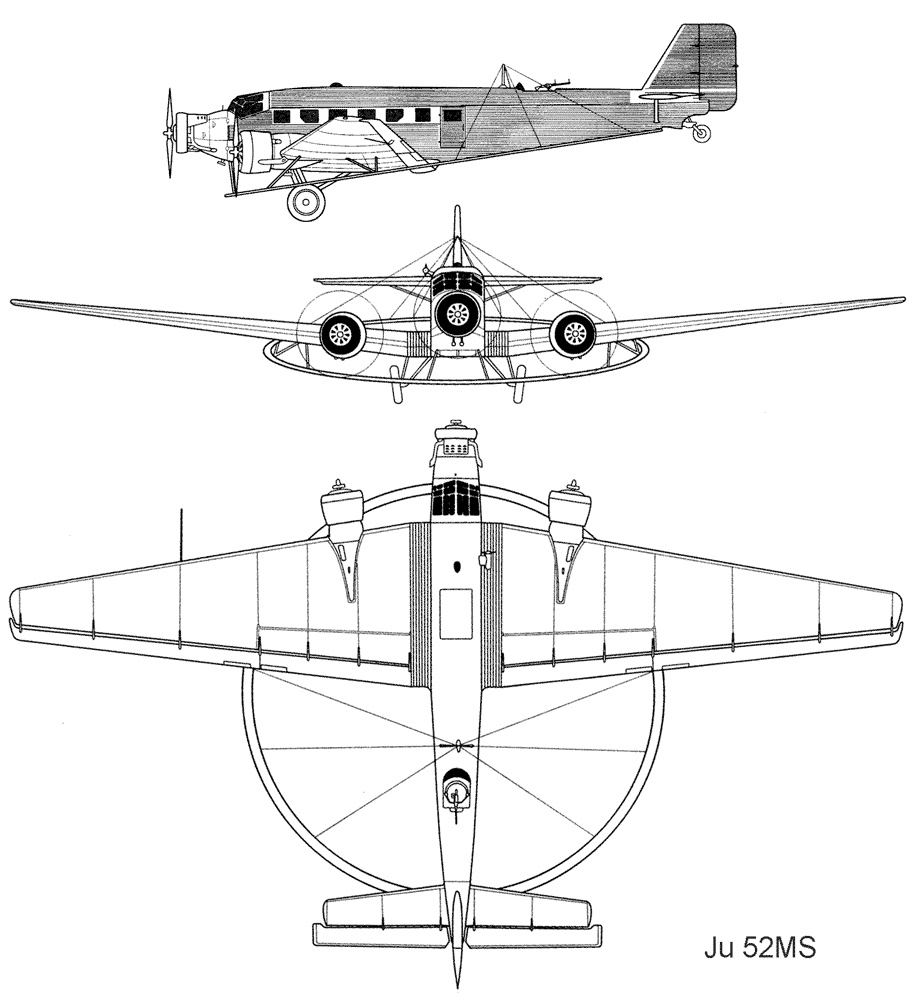
Aviation of World War II


 |
Aviation of World War II |


|
|
Soviet Union | Lend - Lease | Facts | Forum | Germany | Japan | R A F | U S A A F | Other | Photos | ||||||||||||||||||||||||||||||||||||||||||||
|
| ||||||||||||||||||||||||||||||||||||||||||||
Ju-52Medium Transport AircraftJunkers
The first models produced (from Ju-52a to Ju-52d) were intended for civilian use and differed only in the type of engines installed on it. But the Ju-52 / 3m version already had three engines, which immediately gave a significant increase in speed and payload. Initially, the Ju-52 / 3m was used not only as a transport, but also as a bomber, but by the beginning of World War II, its main function remained transport. This machine was also used as an auxiliary aircraft of the Air Force and served in all theaters of military operations until May 1945. This aircraft was built in the amount of about 4850 copies, the vast majority of them were already intended for military needs in modifications from Ju-52 to Ju-52 / 3m - Ju.52 / 3m-g14e. The last production version of the Ju.52 / 3m-g14e was put into production in the late autumn of 1943 and was produced until mid-1944. Ju-52 / 3m7e in the 18-seat version was the main modification of the Ju-52 transport aircraft. This version was equipped with an autopilot and had a wide cargo compartment door for quick landing and landing. Subsequent modifications of the machine had an improved landing gear, placed so that it did not clog with sand and mud on unpaved airfields. The Ju-52 formed the backbone of the Luftwaffe transport fleet throughout World War II.
| ||||||||||||||||||||||||||||||||||||||||||||
|
|
Ju-52
|
| Photo | Description |
 |
Gradually, the mine war spread to new and new areas, and the need for minesweepers grew accordingly. Therefore, in October 1942, on the basis of "Sonderkommando Mausi", the 1st group of minesweepers (Minensuchgruppe 1) was created. Her squadrons, 1st to 5th, were based in various maritime theatres. In March 1944, these units became independent combat units, but retained their previous numbering.
Of course, the massive minelayings of the Royal Air Force of Great Britain delivered the bulk of the Germans' worries. The scale of the mine-protecting activity of the Soviet Navy was much more modest, however, the "mice" had to work hard in the Eastern European theater. Since non-contact mines were practically not used by our fleet in the North, the story will only be about the Baltic and the Black Sea.
In the German report on the fighting in the Baltic Sea in 1941, in the section on mine warfare, there is an interesting passage. There, with a fair amount of irony, it is said that the only fact that surprised the German sailors was the complete absence of the use of non-contact mine weapons by the Soviet Navy. Indeed, a little more than a dozen MIRAB mines, exposed by Soviet aircraft and boats in 1941, are unlikely to have caused serious damage to the Kriegsmarine. However, having occupied almost the entire coast of the Soviet Baltic, the Germans were faced with the fact that their own mine banks began to interfere with both navigation and the actions of warships. To clear mines from the areas of the landing operation to capture the Moonsund Archipelago, among others, minesweepers were also involved. Together with the Ju52MS, a rare type of minesweeper based on the Do23 aircraft was used in this operation.
Like the allies, measures to create mines with an induction acoustic fuse were also taken in our country. However, domestic mines AMD-2-500 and AMD-2-1000 with a two-channel fuse were never put into service until the end of the war.
The combat use of such an unusual aircraft by the enemy did not escape the attention of domestic military sailors and aircraft designers. Already in 1943, a draft of a similar minesweeper aircraft PS-84T (Li-2MT) appeared. But, apparently, the Soviet analogue of the Mausi never took off.
